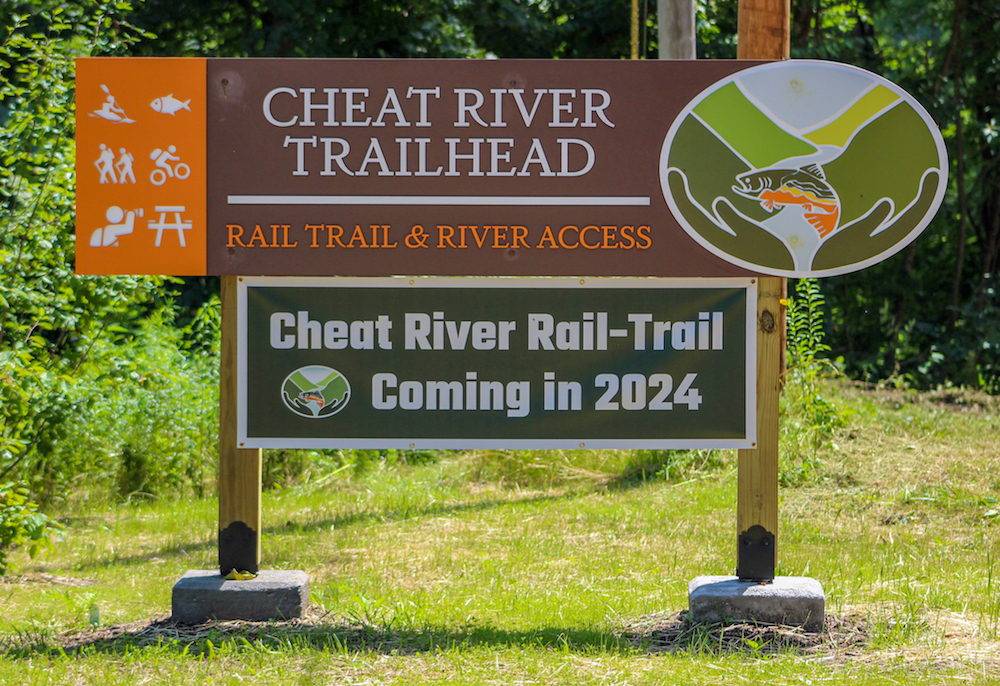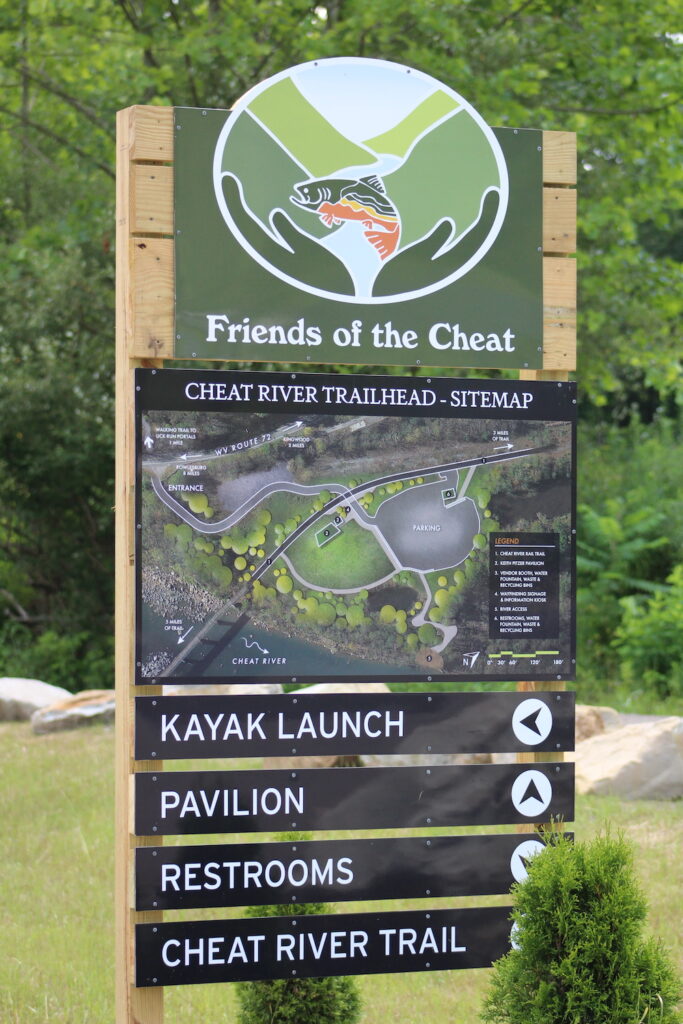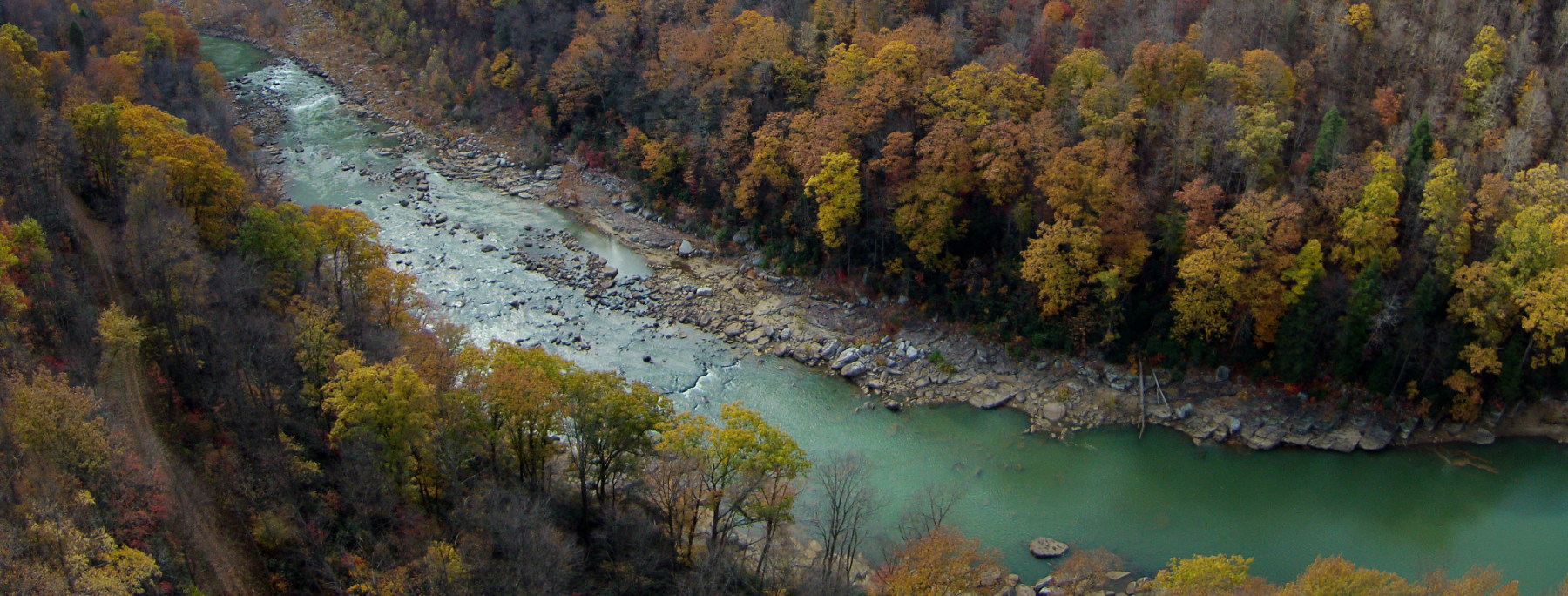
by Sera Janson Zegre
I was surprisingly skeptical at first. Even with my fresh-out-of-grad school lens of possibility, I remember reading through a grant application from Friends of the Cheat (FOC) with doubt. FOC saw a future for an abandoned industrial site along the Cheat River; they envisioned a beautiful educational access point for river and trail recreation for future generations.
In 2009, I was working at the Northern West Virginia Brownfield Assistance program as a project manager of a mini grant program, funded by the Claude Worthington Benedum Foundation, to kickstart efforts to transform communities. It was my first year in West Virginia following graduate school in idyllic Oregon. I was not prepared for the decimation of rivers that I saw from their banks my first spring in the state, nor how slowly change happens. I remember feeling as though the FOC application was a dreamy long shot. But the grant was for exactly that stage of visioning and planning.

I remember thinking FOC’s grant application seemed beyond what was possible, at least beyond what existed on the banks of the Cheat River at the time. Of the five chosen projects, the FOC application ranked fifth. It made the cut, and I traveled to the Cheat River Trailhead site with the poster-sized check for $5,000. I stood there with the FOC crew and former Executive Director Keith Pitzer while we took a commemorative picture on the site, surrounded by weeds and former industrial trash. With raised eyes, I listened to Keith describe a future river access with amenities and an interpretive center. That year, the team ran planning meetings alongside gems like National Park Service – River, Trails, and Conservation Assistance program Outdoor Recreation Planner, Peggy Pings, and Mon Rivers Trails Conservancy Executive Director, Ella Belling—who understand these things take time and community—and assembled beautiful early visuals with WVU student Mary Luckini. The final event was a showcase of the projects where we invited funding agents, developers, and other potential project supporters to kickstart the projects.
In my 20s, I would travel to the Cheat River as a single, whitewater kayaker. In my 30s, I started living in the state and investing in its future. Since then, I’ve had four different jobs and birthed two new West Virginians. Now in my 40s, I consider the Cheat River my/our home. Ironically, not far from the place of my once-raised eyebrows, I visit regularly with my kids, my partner, my merfriends. I’ve born witness to the river’s evolution alongside my own. What was once only a dream is becoming a reality that I can share with my partner and our children and our community. Now, immersed in the watershed, I am so grateful for the access, the amenities, and the beauty of a vibrant site ready to take on the day and future generations.
Environmental and social change takes time and can feel daunting. After more than a decade, I can stand in the same place I stood as a skeptic for a vision that felt a little too big. That initial $5,000 seeded a project that eventually brought in millions of dollars in grant funding. Visions may feel unrealistic, but how else do dreams actualize? It seems rare to stand back and see success within a lifetime.
Change starts with planting a seed. This physical or metaphorical business of planting is an act of hope for the future. I stand in awe at the fruits of a simple, yet courageous act of hope in the Cheat watershed. I stand in gratitude for the persistence and dedication of those who have sown and cultivated this project at FOC and on FOC Rail Trail Committee. I’m grateful to witness experience the fruits of the labor. And it motivates me to plant something more.


